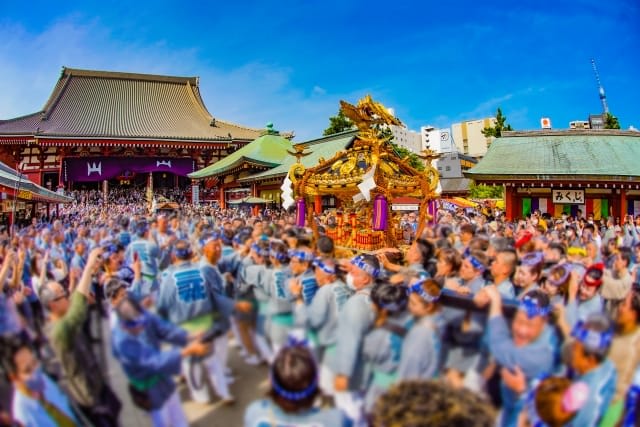Ginza Food Guide: Must-try Food & Where to Eat in Tokyo's Luxurious District
The reason for updating the article is the growing interest in tours that allow visitors to enjoy Japanese food culture and delicious dishes. As these tours gain popularity, Magical Trip's tour, which ranked #1 among all tours on Tripadvisor, has been receiving numerous applications.

For those interested in traditional Japanese cuisine, join the "Wagyu Beef & Sake Paring Foodie Tour in Ginza," where a knowledgeable local guide will take you to their highly recommended Japanese restaurants. While enjoying Wagyu and sake, your local guide will teach you proper dining etiquette and the best ways to savor each dish.
If you want to enjoy exceptional Japanese cuisine in Tokyo, consider joining one of these tours. With expert guides who know Tokyo inside and out showing you their recommended restaurants, you'll have an unforgettable Japanese dining experience.
・Tokyo Bar Hopping Night Tour in Shinjuku(ranked #1 among all tours on Tripadvisor)
・Finest Quality Sushi & Tempura Dining Experience in Ginza
We hope you'll have a wonderful time experiencing everything Ueno has to offer by joining a Magical Trip tour!
Introduction
I confidently share with you, having grown up in Tokyo and visited numerous restaurants. Ginza's food culture is filled with unique charm unparalleled in the world. While high-end restaurants line the streets, you can also enjoy affordable gourmet food in the basement food halls, showcasing its multifaceted nature.
Indeed, the difficulty in securing reservations at top-tier restaurants and the occasionally perceived high threshold might be troublesome for foreign tourists. However, the unique culinary experience that awaits in Ginza will surely be deeply etched in your travel memories.
Witnessing the craftsmanship at long-established sushi restaurants, encountering artistic dishes at Michelin-starred restaurants, spending relaxed moments in historic cafes. I'll guide you through Ginza's food scene while comparing it with other areas in Tokyo.
Table of Contents
・What is Ginza's Food Scene?
・Ginza's Characteristics Compared to Other Tokyo Areas
・Food Culture to Experience in Ginza
・Tips for Enjoying Ginza's Food Scene
・3 Tours to Fully Enjoy Ginza
・Frequently Asked Questions
If you're interested in "Best Sushi in Ginza", Check the article below.
・The Ultimate Ginza Sushi Guide 2026: Top Restaurants & Expert Tips w/map
If you're interested in "Half-day Itinerary in Ginza", Check the article below.
・Half Day Trip to Ginza: Perfect Morning & Evening Itinerary Guide
What is Ginza's Food Scene?
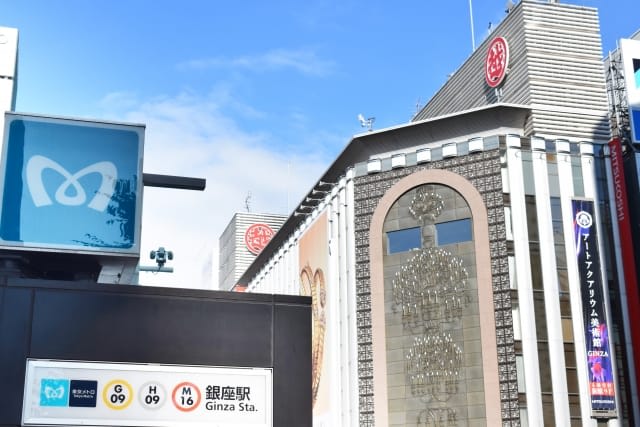
Ginza's food scene can be described as the pinnacle of Tokyo's culinary culture. I still vividly remember the shock I felt when I first visited a high-end restaurant in Ginza. The refined atmosphere and the array of exquisite dishes made me feel as if I had wandered into a different world.
Ginza is an area where you can feel a particularly luxurious ambiance in Tokyo, with a sophisticated gourmet culture deeply rooted. It has a higher concentration of Michelin-starred restaurants compared to other areas, attracting the attention of food enthusiasts from around the world.
When I guide my friends from overseas, I always choose this area. The reason is that you can have a special food experience that can only be tasted in Ginza.
The charm of Ginza lies in the coexistence of traditional Japanese cuisine and modern fusion dishes. For example, after savoring the craftsmanship at a long-established sushi counter, you can enjoy the fusion of cutting-edge French cuisine and Japanese food. This diversity is what sets Ginza's food scene apart from others.
Not only high-end dining but also cafes and basement food halls are not to be missed. I often stop by cafes in Ginza between work, where I can enjoy little luxuries like sweets created by top chefs and sandwiches made with carefully selected ingredients.
Ginza's Characteristics Compared to Other Tokyo Areas
Tokyo has various attractive areas, but Ginza's food scene stands out as a special existence distinct from other areas. From my years of food exploration in Tokyo, I'll introduce in detail the differences between Ginza and other areas.
Differences from Shinjuku and Shibuya

Shinjuku and Shibuya are vibrant areas I often visited during my student days. These areas are characterized by youth culture and popular dining establishments, with an energetic atmosphere.
On the other hand, Ginza's charm lies in its calm atmosphere. When I have business dinners with important clients, I always choose Ginza. The reason is that you can enjoy conversations in a sophisticated space without distractions.
Ginza is characterized by many high-priced restaurants such as high-end French and sushi. For example, at my favorite sushi restaurant in Ginza, I can savor exquisite sushi where the craftsman's skill shines in each piece.
In contrast, Shinjuku and Shibuya have an abundance of izakayas and casual restaurants. The memories of drinking with friends until late at night during my student days are nostalgic.
While meals themselves are presented as art in Ginza, Shinjuku and Shibuya generally offer a more casual enjoyment style. I can't forget the emotion I felt when I witnessed artistically presented dishes at a Michelin-starred restaurant in Ginza.
In Shinjuku and Shibuya, while the deliciousness is of course important, the focus is more on enjoying conversations with friends and the atmosphere.
More Detailed Information About "Food in Shinjuku"
・Food Areas at Shinjuku 2026: From Street Food to Skyscraper Dining
More Detailed Information About "Food in Shibuya"
・2026 Food at Shibuya: 22 Best Trendy Restaurants, Bars and Cafes
Differences from Asakusa and Ueno
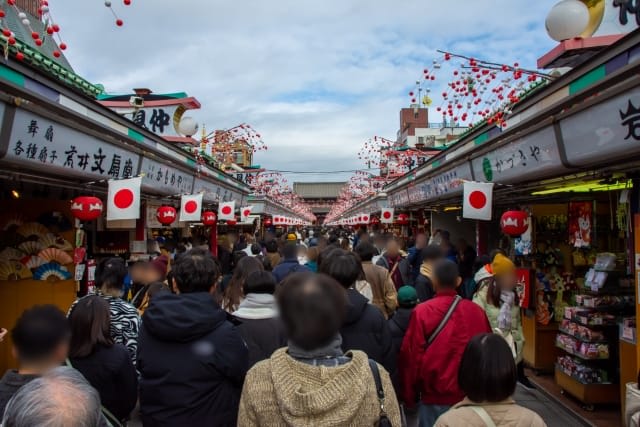
Asakusa and Ueno are areas I often visited with my family when I was a child, filled with fond memories. These areas are places where you can enjoy traditional Japanese food culture characteristic of downtown, with charms contrasting to Ginza. For example, eating ningyo-yaki in Asakusa's Nakamise Street or enjoying popular sushi in Ueno's shopping district. The simple deliciousness of these has a completely different charm from the refined cuisine of Ginza.
On the other hand, even traditional Japanese cuisine in Ginza tends to have a more refined approach. When I first experienced high-end kaiseki cuisine in Ginza, I was moved by its beauty and delicate flavors. It was an experience unique to Ginza that couldn't be tasted in Asakusa or Ueno.
Compared to the street food in Asakusa and Ueno, Ginza is dominated by high-end desserts and gift-oriented foods. The yokan I purchased at a long-established Japanese confectionery store in Ginza impressed my overseas friends with its depth of flavor and delicate beauty.
Also, Ginza is supported more by local wealthy individuals and business elites rather than being tourist-oriented. I always choose restaurants in Ginza for important business meetings. The reason is that I feel not only the quality of the food but also the sophisticated atmosphere pushes business success.
More Detailed Information About "Food in Ueno"
・Ueno Restaurant Guide: Must-try Foods From Street Eats to Global Treats
More Detailed Information About "Asakusa Area"
・Exploring Asakusa: Your Essential Guide to Tokyo's Most Traditional Neighborhood
Differences from Omotesando and Harajuku
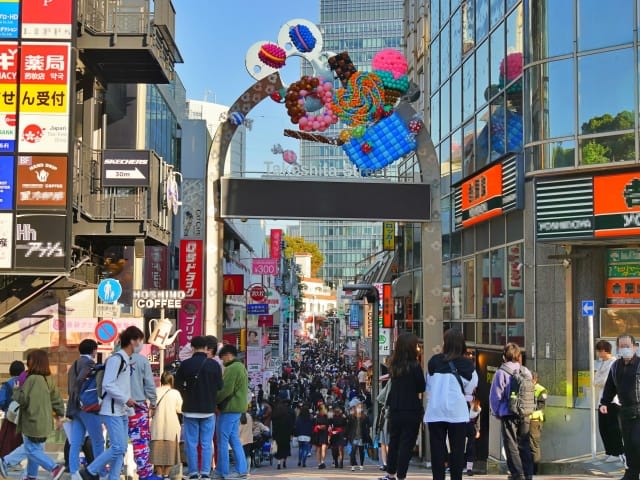
Omotesando and Harajuku are areas I often visited when I was young to explore the latest fashion trends. These areas are spots for trend-sensitive youth, with charms different from Ginza. Restaurants in Omotesando and Harajuku are characterized by innovative menus incorporating the latest trends and visually appealing dishes that look good on Instagram.
On the other hand, Ginza's charm lies in its more classic and mature atmosphere. When I dine in Ginza, I always feel a special mood. For example, when I dined at a long-established French restaurant in Ginza, I was so immersed in the historic space and dishes backed by tradition that I lost track of time.
Ginza is characterized by many traditional sushi and kaiseki restaurants. At my favorite sushi restaurant in Ginza, craftsmen with skills and knowledge passed down for generations prepare the highest quality ingredients right before your eyes. I'm moved by their technique every time.
In contrast, cafes and Instagram-worthy menus stand out in Omotesando and Harajuku. When I was younger, I also lined up at a popular pancake shop in Harajuku, and its flamboyance and bustle had a completely different charm from Ginza.
Restaurants in Ginza are characterized by their emphasis on history and tradition. For example, at long-established restaurants in Ginza, recipes passed down for generations and modern essences are beautifully fused. The deep flavors and spaces that make you feel history are unique charms of Ginza that can't be experienced in Omotesando or Harajuku.
More Detailed Information About "Food in Harajuku"
・Food at Harajuku 2026: "Kawaii" Photogenic Sweets & Eats
Food Culture to Experience in Ginza
The food culture in Ginza is truly a condensation of the essence of Tokyo's cuisine. From my years of food exploration in Ginza, I'll introduce the food culture in Ginza that I absolutely want foreign tourists to experience.
High-End Sushi and Kaiseki Cuisine
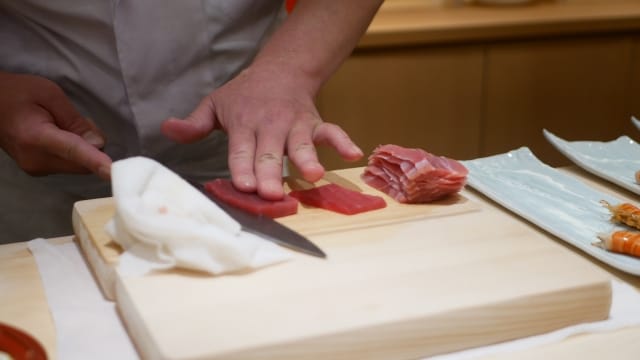
Ginza is the most famous concentration of sushi restaurants in Tokyo, a place where you can experience the quality of ingredients and craftsmanship. I still vividly remember the shock I felt when I first visited a high-end sushi restaurant in Ginza. The craftsman's skill seen over the counter, the passion put into each piece, and the exquisite harmony of flavors spreading in my mouth. It felt like I was tasting not just a meal, but a work of art.
Kaiseki cuisine is also recommended as the ultimate food experience to enjoy Japan's four seasons with all five senses.
Sushi restaurants and Japanese restaurants that attract food fans from all over the world are gathered in Ginza. For example, at a sushi restaurant that has earned three Michelin stars, it may take months to get a reservation, but it's well worth it. When I guided my friends from overseas, they praised it as "the best meal of my life."
High-end sushi and kaiseki cuisine in Ginza are not just delicious. They are truly works of art that gather the essence of Japanese food culture. The dialogue with the craftsman, the dishes that make you feel the changing seasons, and the sophisticated space. All of these come together to create an unforgettable food experience.
Author’s Recommendation:
・Harutaka
Harutaka is Tokyo's only three-Michelin-starred sushi restaurant (2024), located in Ginza. Chef Harutaka Takahashi, who trained under legendary Jiro Ono, offers premium omakase courses featuring daily-selected seasonal seafood.
More Detailed Information About "Harutaka"
・Experience Exquisite Sushi at Ginza's Michelin-Starred Harutaka – A Culinary Journey in Tokyo
・Sushi Arai
Sushi Arai is a Michelin one-star sushi restaurant in Ginza, Tokyo, run by Chef Yuichi Arai. Known for meticulous craftsmanship and premium ingredients, it offers omakase courses featuring carefully prepared nigiri and seasonal dishes.
More Detailed Information About "Sushi Arai"
・Experience Exquisite Edomae Sushi at Ginza's Sushi Arai: A Culinary Masterpiece
・Sukiyabashi Jiro
Sukiyabashi Jiro is a legendary two-Michelin-starred sushi restaurant in Ginza, Tokyo, established by master chef Jiro Ono in 1965. Famous for exquisite Edomae sushi and strict dining etiquette, it's considered Japan's one of finest sushi establishment.
More Detailed Information About "Sukiyabashi Jiro"
・Sukiyabashi Jiro Ginza: Experience Tokyo's Legendary Michelin-Starred Sushi Restaurant
・Ginza Ukai-tei
Ginza Ukai-tei is a prestigious teppanyaki restaurant in Tokyo's Ginza district, part of the Ukai Group since 2003, famous for premium wagyu beef and elegant museum-like atmosphere.
・Teppanyaki Ginza Gomei
Teppanyaki Ginza Gomei is a legitimate, highly-rated basement restaurant in Ginza's Maxido Pia Building, specializing in premium A4-A5 grade Akita beef with traditional Japanese farmhouse atmosphere and intimate dining experience.
・Tempura Kondo
Tempura Kondo is a completely legitimate, highly prestigious 2-Michelin starred tempura restaurant located in Ginza, Tokyo, masterfully run by renowned Chef Fumio Kondo, famous for his innovative vegetable tempura techniques.
More Detailed Information About "Tempura in Ginza"
・Top 10 Must-Try Tempura Restaurants in Ginza 2026: Kondo, Azabu Yokota & Casual Restaurants
・Tenpura Azabu Yokota
Tempura Azabu Yokota is a prestigious Michelin-starred family-run tempura restaurant in Azabu-Juban, famous for its 8-year consecutive Michelin recognition, signature curry salt, and exceptional shrimp-focused omakase courses.
Basement Food Hall Gourmet
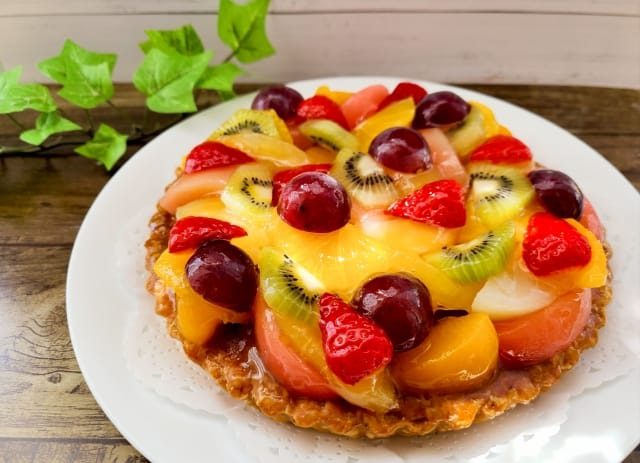
The basement food halls in Ginza are a treasure trove of Japanese food culture. I often stop by on my way home from work, and each time I make new discoveries. Here, you can purchase high-quality foods sourced from all over Japan. From fresh seafood from Hokkaido, long-established Japanese confectionery from Kyoto, to rare vegetables from Kyushu, delicious items from all over Japan are gathered in one place.
Basement food halls are a unique Japanese food culture experience, and you can often enjoy food samples. I particularly look forward to trying seasonal Japanese sweets and bento boxes supervised by famous chefs. Just one bite conveys the appeal of the product. This "food sampling culture" is a wonderful experience where you can feel the heart of Japanese hospitality.
Japanese sweets and souvenir foods popular among tourists are also part of the charm of Ginza's basement food halls.
When I guide friends from overseas, I always stop by the basement food halls. Everyone is moved not only by the beautiful appearance but also by the delicate flavors of beautifully packaged Japanese sweets and seasonal limited sweets that express Japan's four seasons. Also, long-lasting foods and sweets with Japanese-style packaging are very well-received as souvenirs.
Author’s Recommendation:
・Mitsukosi Ginza
Mitsukoshi Ginza is a historic luxury department store, located at Ginza's 4-chome intersection, famous for its 12 floors of premium shopping and exceptional basement food halls.
・Matsuya Ginza
Matsuya Ginza is a historic department store founded in 1869, established in Ginza in 1925, famous for luxury fashion brands, designer boutiques, and its prime location on Chuo-dori Street.
・GINZA SIX
GINZA SIX is one of Tokyo's largest luxury shopping complex opened in 2017, featuring over 200 stores across 9 floors, flagship luxury brands, contemporary art displays, rooftop garden, and premium services in Ginza.
More Detailed Information About "Shopping Places in Ginza"
・Ultimate Guide to Ginza Shopping 2026: Top Stores, Trends, and Experiences in Tokyo’s Luxury Hub
Modern Fusion Cuisine
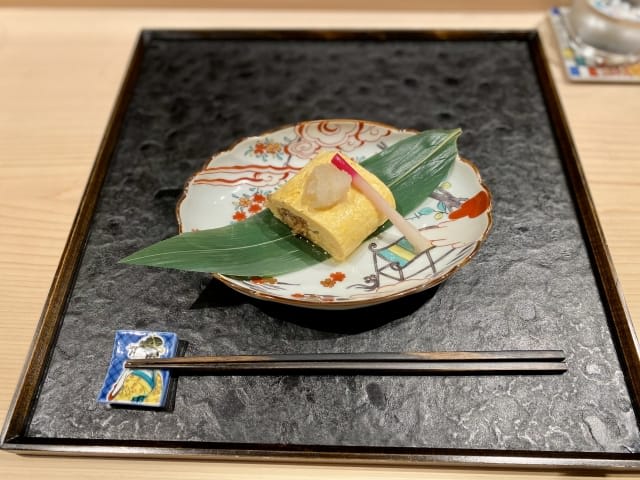
Creative cuisine based on traditional Japanese food is also popular in Ginza. When I first experienced such fusion cuisine, I was surprised by its novelty.
For example, dishes that fuse Japanese cooking techniques with elements of French cuisine were truly an eye-opening experience. By using seasonal Japanese ingredients while incorporating Western cooking techniques, a completely new taste is born.
There are many restaurants in Ginza where you can enjoy the fusion of Japanese and French, or Japanese and Italian cuisines. At my favorite restaurant, you can encounter dishes where the delicacy of Japanese cuisine and the glamour of French cuisine are beautifully harmonized. For example, a dish of roasted wagyu beef with a Japanese-style sauce is an exquisite piece where Japanese and Western gourmet cultures are perfectly fused.
Modern fusion cuisine in Ginza offers new discoveries even for those well-versed in Japanese food, as you can experience Japanese ingredients and cooking methods in new forms.
More Detailed Information About "Restaurants in Ginza"
・Ginza Restaurants 2026: Best Dinner Places in Center of Tokyo's Food Culture
・Experience Exquisite Dining in Ginza: Top Michelin-Starred Restaurants to Visit in 2026
Tips for Enjoying Ginza's Food Scene
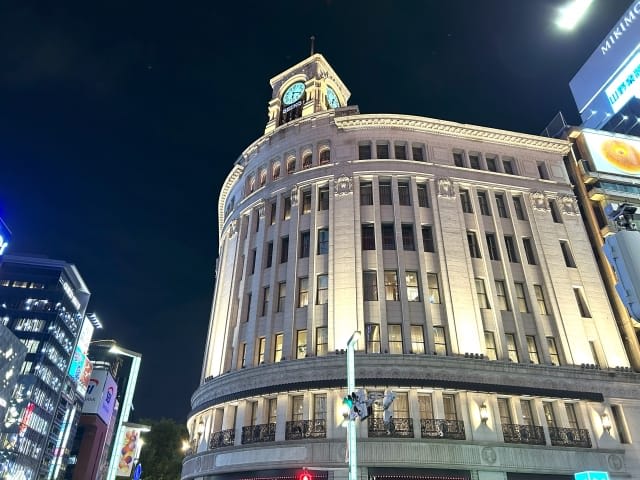
There are several tips to maximize your enjoyment of Ginza's food scene. From my years of food exploration in Ginza, I'll share information that will be useful for foreign tourists.
First, I recommend researching the characteristics of the area and stores you want to visit in advance. Ginza is a large area with various genres of restaurants gathered. I always check store information and menus online before visiting. Especially for popular restaurants, reservations are often necessary, so preliminary research is important.
Aiming for lunchtime or weekdays allows you to enjoy more reasonably. I myself enjoy the same quality of food at half the price of dinner by using lunch menus even at high-end restaurants. Also, it's often less crowded on weekdays, so you can enjoy your meal in a relaxed atmosphere.
Knowing Japanese food culture and manners allows for a deeper experience. For example, understanding basic manners such as etiquette at sushi counters can lead to a more fulfilling food experience. When I guide friends from overseas, I always give a brief manner lesson in advance.

It's also good to utilize English-speaking restaurants or translation apps. Recently, more restaurants are preparing English menus, but there are still many with only Japanese menus. My recommendation is to use translation apps to translate menus and signs. This opens up more options.
I recommend trying various genres of cuisine to taste the diversity of Ginza. Not only high-end sushi restaurants but also modern fusion cuisine, long-established tempura shops, the latest sweets shops, Ginza has various food attractions. By visiting different genres of restaurants each time, I realize the depth of Ginza's food.
Lastly, to enjoy without feeling language barriers or reservation hurdles, I recommend Magical Trip's food tours. You can tour famous restaurants in Ginza with an English-speaking guide, so you can enjoy authentic Japanese food without worrying about language. Also, they guide you to restaurants that are difficult to reserve, allowing you to efficiently experience Ginza's food culture.
More Detailed Information About "Manners at High-End Sushi Restaurants"
・How to Enjoy High-End Sushi Restaurants in Japan: Complete Guide to Proper Etiquette
3 Tours to Fully Enjoy Ginza
To fully savor Ginza's food culture, tours with professional guides are ideal. From my years of food exploration in Ginza, I'll introduce three especially recommended tours.
"Wagyu Beef & Sake Paring Foodie Tour in Ginza" by Magical Trip

This is a wagyu beef and sake pairing tour provided by us at Magical Trip. It's the ultimate food experience where you can fully enjoy the charm of Ginza over 3.5 hours.
The biggest attraction of this tour is that you can compare over 20 types of sake from Nara Prefecture while in Tokyo. In fact, Nara is known as the birthplace of sake, with a history dating back over 1300 years. During the 30-minute all-you-can-drink session, you can learn in detail about the techniques of toji (sake brewmasters) and the sake brewing process, deepening your understanding of Japanese sake culture at once.
Also, it's noteworthy that you can taste as much A5 rank, the highest grade of wagyu beef, in teppanyaki style as you like. After enjoying the first 4 dishes, you can order additional portions of your favorite parts. The sweetness of wagyu fat pairs excellently with sake, allowing you to fully enjoy a uniquely Japanese taste.
It's also attractive that you can explore the streets of Ginza with an English-speaking local guide. You'll be guided not only to famous tourist spots but also to hidden gems known only to locals.
You can visit three different atmospheres - a sake bar, a teppanyaki restaurant, and a cafe or bar - experiencing the diverse faces of Ginza at once. The price of $178.26 is very reasonable considering the content provided.
However, children under 6 years old cannot participate, and there are restrictions on special meal requests. Gluten-free accommodation is not possible, and if you have allergies, you must notify at least one day in advance.
For details: "Wagyu Beef & Sake Paring Foodie Tour in Ginza" by Magical Trip
Check out the video to get a clear picture of the tour details
@magicaltriptours A Night in Ginza is a Night to Remember #japan #japanesefood #wagyu #ginza ♬ original sound - magicaltrip
More Detailed Information About "Wagyu Guide in Ginza"
・Ginza's Ultimate 2026 Wagyu Guide: Top Restaurants for Premium A5 Beef and Exquisite Yakiniku
"Finest Quality Sushi & Tempura Dining Experience in Ginza" by Magical Trip
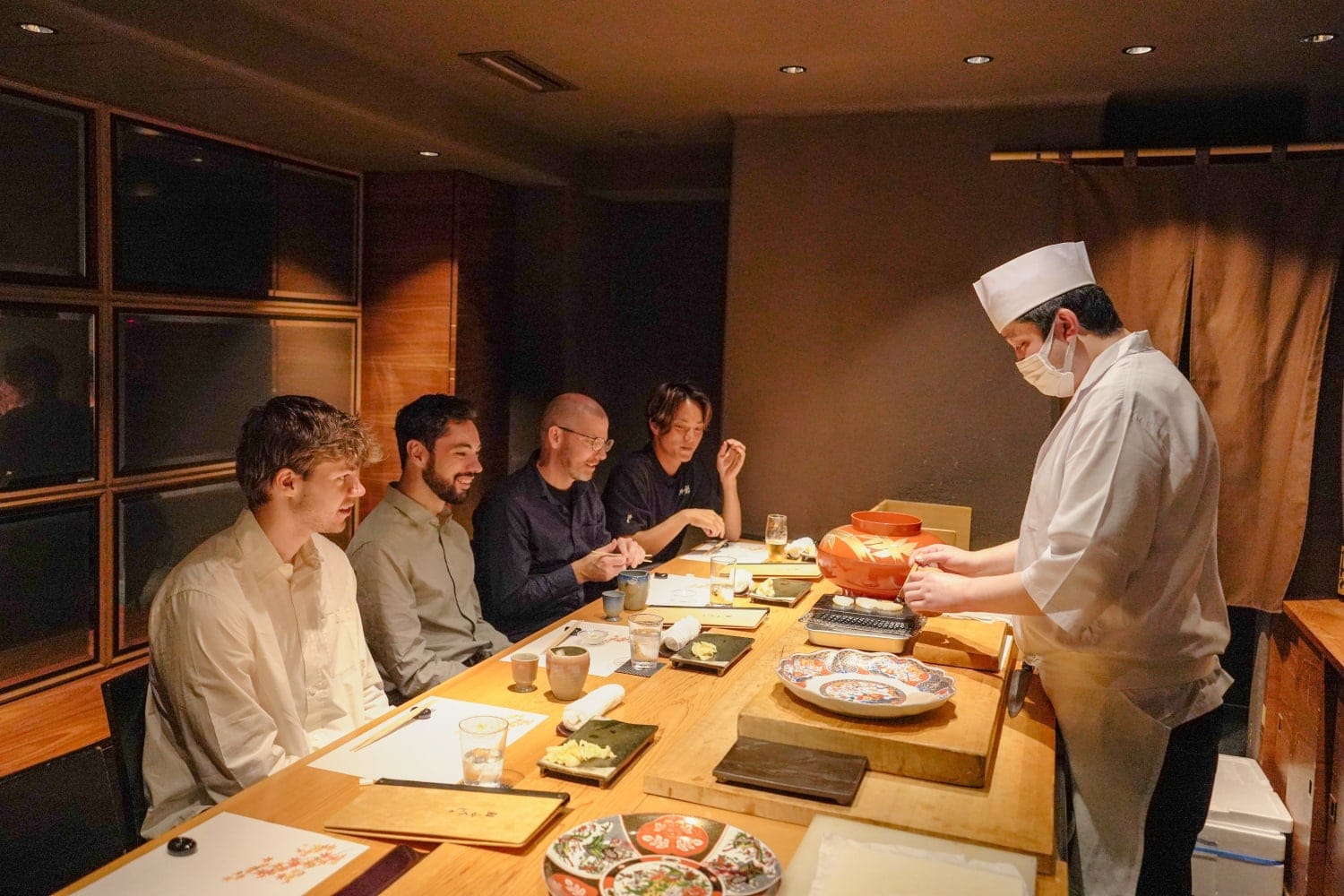
This is a dining tour that allows you to enjoy the highest quality sushi and tempura at high-end restaurants in Ginza, a gourmet's dream come true. It's provided by us at Magical Trip. Counter seats are guaranteed at Michelin-starred or highly-rated restaurants on Tabelog, offering a special experience where you can closely observe the skilled craftsmanship of experienced chefs.
During the 2.5-hour tour, you'll be served 2 drinks each (such as beer or sake) at both the sushi restaurant and the tempura restaurant, totaling 4 drinks. There's also a premium sake option, making it ideal for celebrations or special occasions.
An English-speaking guide accompanies you, kindly explaining the manners and etiquette unique to high-end sushi restaurants. You can also learn in detail about the history and culture of Ginza from the guide, enriching the conversation between meals.
The price of $203.73 is rather a bargain considering that you can avoid the hassle of making reservations at high-end restaurants in Ginza and can definitely enjoy the highest quality sushi and tempura.
However, vegetarians need to make a request in advance by the day before, and unfortunately, vegans, gluten-free, and shellfish allergy sufferers cannot be accommodated.
For details: "Finest Quality Sushi & Tempura Dining Experience in Ginza" by Magical Trip
"Tokyo Private Driving Tour by Car or Van with Chauffeur" by Glocal Japan
Source: TripAdvisor
I also recommend this private driving tour by Glocal Japan. You can efficiently tour the main spots of Tokyo in a comfortable car with an English-speaking driver-guide.
The biggest attraction is that you can visit iconic spots in Tokyo such as Senso-ji Temple, Meiji Shrine, and Shibuya Scramble Crossing in one day, in addition to Ginza. You can enjoy sightseeing without worrying about the complex route maps of public transportation or crowds, even if it's your first visit to Tokyo.
With a luxurious 9-hour setting, you can flexibly adjust the itinerary according to the group's interests and pace. You can choose between a 5-seater premium van or a 9-seater spacious van, accommodating various group sizes from 4 to 9 people.
The price starting from $315.23 for a group of 4 is not expensive considering the transportation costs and time costs in Tokyo. However, due to Tokyo's traffic conditions, there's a possibility that you may not be able to visit all places as planned, and time adjustments may be necessary especially after the evening.
Also, please note that as this tour is not specifically focused on Ginza, there may be individual differences in the guide's knowledge about Ginza.
For details: "Tokyo Private Driving Tour by Car or Van with Chauffeur" by Glocal Japan
These three tours offer wonderful opportunities to experience the charm of Ginza from different angles.
For those who particularly want to focus on food, I recommend the two tours by Magical Trip with specialist guides. For those who want to enjoy Tokyo sightseeing efficiently, Glocal Japan's driving tour is suitable as it ensures comfortable transportation.
The biggest attraction of all these tours is that you can enjoy restaurants and places that are usually difficult to reserve, without stress. Please choose the best tour that suits your travel purpose.
Frequently Asked Questions
I'll answer frequently asked questions from foreign tourists about Ginza's food scene. Based on my years of food exploration in Ginza, I'll provide specific and practical information.
Is Ginza's Food Scene Too High-End and Difficult to Enter?
While Ginza is indeed an area with many high-end shops, it's not necessarily "difficult to enter." Many shops are high-end, but you can enjoy them relatively reasonably during lunchtime. I myself enjoy lunch in Ginza once a week, and there are many lunch sets where you can savor high-end restaurant tastes for around 5,000 yen.
Cafes and basement food hall gourmet are particularly easy to use. Ginza has various cafes from long-established coffee shops to the latest sweets cafes.
Recently, there has been an increase in shops with an atmosphere that's easy for foreigners to enter. Many stores have prepared English menus, and staff's English proficiency has been improving year by year. When I guided my friends from overseas, they were able to enjoy their meals relaxed without feeling any language barrier.
Can Ginza's Food Scene Be Enjoyed with Children?
While Ginza has an image of being an adult's town, there's actually a food scene that can be fully enjoyed with children. Some casual restaurants and cafes have menus for children. A family friend of mine often goes out to eat in Ginza on holidays, and they taught me tips for choosing restaurants that satisfy both children and adults.
Basement food halls and takeout gourmet are also recommended for tourists with children. In the food sections of famous department stores in Ginza, various types of bento boxes and side dishes are sold. When I took my nieces and nephews, we all chose what we liked and enjoyed a picnic-like atmosphere in a nearby park. It's a perfect way for children to experience Japan's diverse food culture while adults can enjoy gourmet food.
It's best to check in advance if children are allowed in quiet high-end restaurants. Some restaurants may ask you to refrain from bringing children. When my friend took his 5-year-old son to a high-end sushi restaurant, they consulted at the time of reservation and were provided with a private room, so consider consulting in advance.
More Detailed Information About "Places for Children in Tokyo"
・Places for Children in Tokyo: 10 Best Things to Do with Kids
From high-end restaurants to casual ones, from traditional Japanese cuisine to innovative fusion dishes, Ginza offers a truly diverse world of food. From my years of food exploration in Ginza, I can say that Ginza's food culture is constantly evolving.
However, there are things that remain unchanged. That is the thorough commitment to ingredients and the spirit of hospitality. Each piece of sushi crafted by the chef at a high-end sushi restaurant, the beautiful presentation of kaiseki cuisine, the careful packaging of food sold in basement food halls. All of these embody the Japanese craftsman spirit and the spirit of hospitality that values customers.
I hope you'll enjoy your own Ginza gourmet journey with reference to this article!



